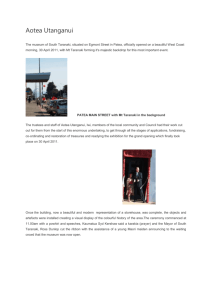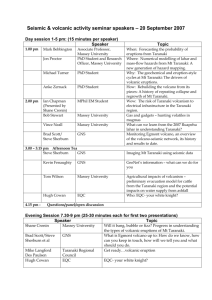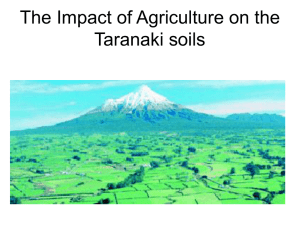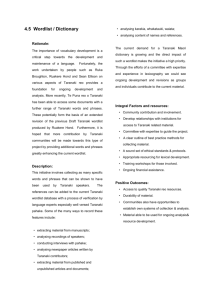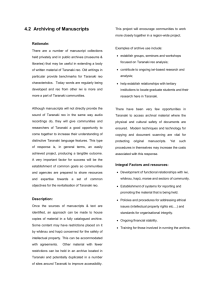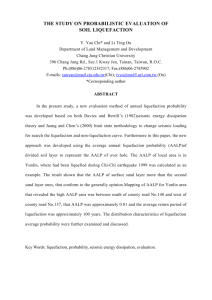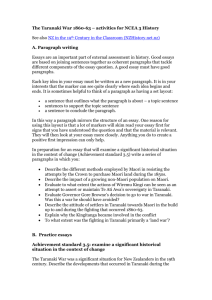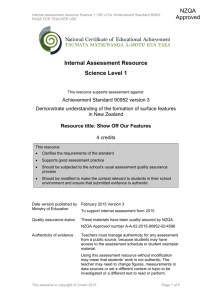May 2013 In May 2012 South Taranaki, Stratford and New Plymouth
advertisement
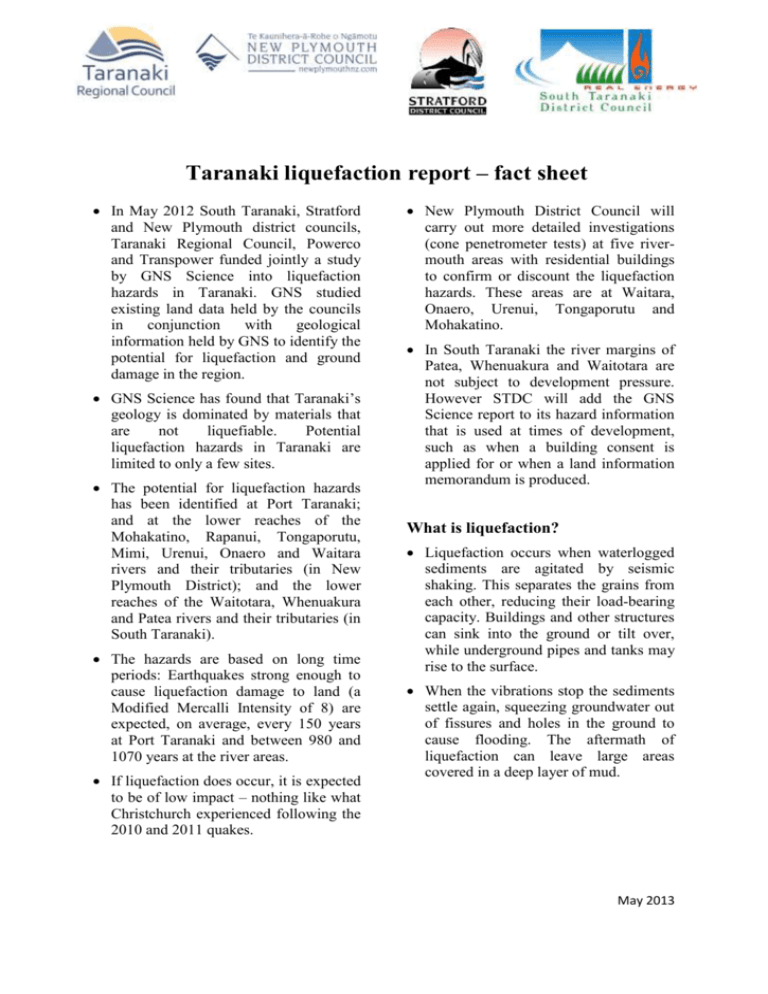
Taranaki liquefaction report – fact sheet In May 2012 South Taranaki, Stratford and New Plymouth district councils, Taranaki Regional Council, Powerco and Transpower funded jointly a study by GNS Science into liquefaction hazards in Taranaki. GNS studied existing land data held by the councils in conjunction with geological information held by GNS to identify the potential for liquefaction and ground damage in the region. GNS Science has found that Taranaki’s geology is dominated by materials that are not liquefiable. Potential liquefaction hazards in Taranaki are limited to only a few sites. The potential for liquefaction hazards has been identified at Port Taranaki; and at the lower reaches of the Mohakatino, Rapanui, Tongaporutu, Mimi, Urenui, Onaero and Waitara rivers and their tributaries (in New Plymouth District); and the lower reaches of the Waitotara, Whenuakura and Patea rivers and their tributaries (in South Taranaki). The hazards are based on long time periods: Earthquakes strong enough to cause liquefaction damage to land (a Modified Mercalli Intensity of 8) are expected, on average, every 150 years at Port Taranaki and between 980 and 1070 years at the river areas. If liquefaction does occur, it is expected to be of low impact – nothing like what Christchurch experienced following the 2010 and 2011 quakes. New Plymouth District Council will carry out more detailed investigations (cone penetrometer tests) at five rivermouth areas with residential buildings to confirm or discount the liquefaction hazards. These areas are at Waitara, Onaero, Urenui, Tongaporutu and Mohakatino. In South Taranaki the river margins of Patea, Whenuakura and Waitotara are not subject to development pressure. However STDC will add the GNS Science report to its hazard information that is used at times of development, such as when a building consent is applied for or when a land information memorandum is produced. What is liquefaction? Liquefaction occurs when waterlogged sediments are agitated by seismic shaking. This separates the grains from each other, reducing their load-bearing capacity. Buildings and other structures can sink into the ground or tilt over, while underground pipes and tanks may rise to the surface. When the vibrations stop the sediments settle again, squeezing groundwater out of fissures and holes in the ground to cause flooding. The aftermath of liquefaction can leave large areas covered in a deep layer of mud. May 2013

